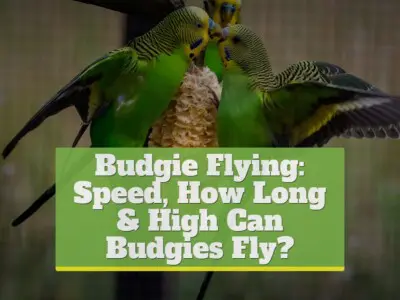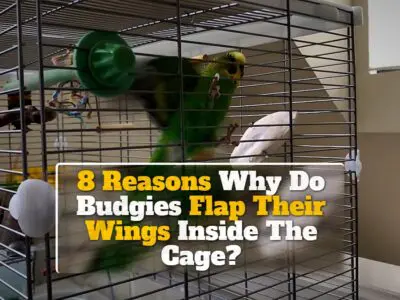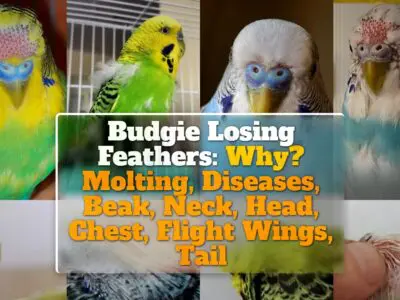Understanding how to clip budgie wings is essential for bird owners seeking to ensure their pet’s safety and well-being.
In this comprehensive guide, we will explore the techniques of wing clipping, the growth and healing process of feathers, the flying implications, and how often this procedure should be done.
As a bird lover, I understand the complexities that come with ensuring the safety and happiness of these delightful creatures.
From managing their flight in a busy home environment to understanding when and how to clip their wings, there’s a lot to consider.
Clipping a budgie’s wings is more than a routine and understanding it can make a huge difference.
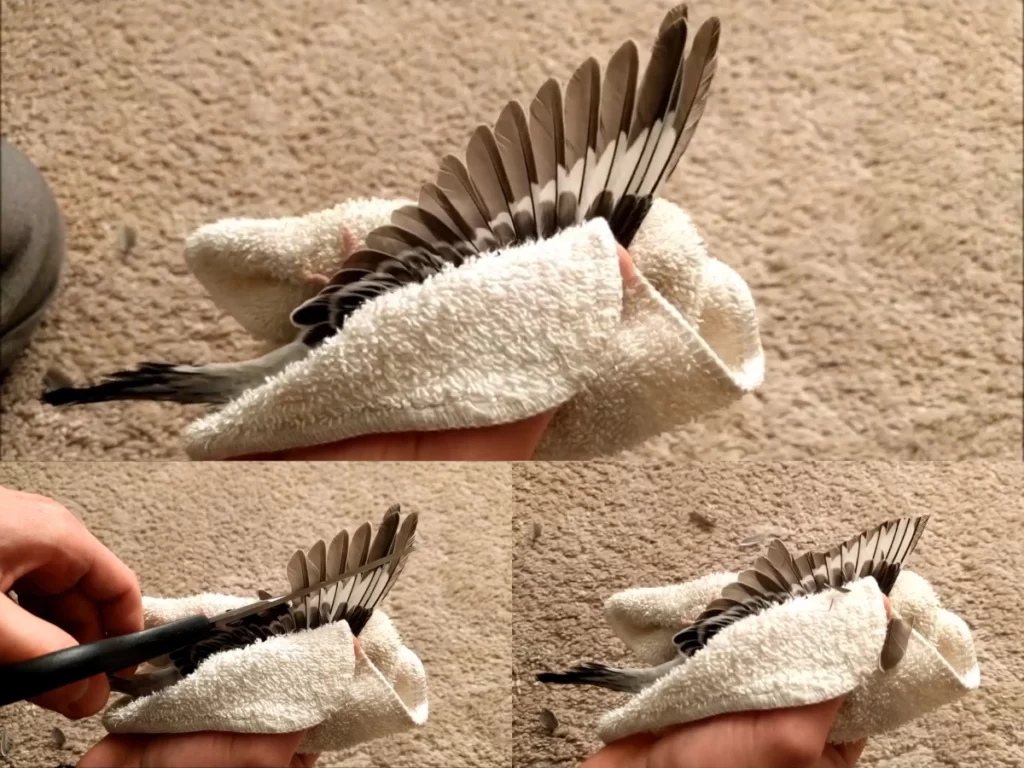
Why Clip Budgie Wings?
The journey to understanding the need for wing clipping in our feathered friends isn’t as straightforward as one might think.
Having owned budgies for a significant period, I’ve encountered numerous discussions and controversies surrounding this topic.
As we delve into this section, let’s uncover the reasons and concerns that drive many to clip their budgie’s wings.
Safety Concerns in an Unnatural Habitat
The first and foremost reason many consider wing clipping is for the safety of the bird itself.
Our homes are filled with potential hazards for these agile fliers: windows, ceiling fans, hot stoves, and even larger pets like our beloved cats.
In their natural habitat, budgies fly freely, maneuvering through trees, and evading predators.
Yet, the confines of our homes present obstacles they aren’t naturally adapted to avoid.
A sudden flight can lead to crashes or worse, fatal accidents. It’s like placing a deer on a busy highway; the environment is just not designed for them.
By clipping their wings, their flight range and speed get limited, making indoor environments less hazardous.
Behavior and Adaptability
Interestingly, budgies, like all birds, are highly adaptable creatures. Clipping doesn’t hinder their ability to move around or explore their surroundings.
They can hop, climb using their beaks, and even flutter down safely from heights.
A clipped budgie can still perch, play, and interact normally.
Furthermore, referring to the study (archived) on Gallus gallus domesticus or domestic chickens, it’s evident that flight-feather clipping can influence a bird’s behavior.
Chickens with clipped primary and secondary flight feathers spent significantly less time at elevated resources.
Similarly, budgies with clipped wings might exhibit altered behaviors, like preferring ground or low perches over high ones.
Addressing Common Misconceptions
Many misconceptions surround wing clipping. Some believe it’s cruel, causing physical pain to the bird.
But if done correctly, it’s similar to trimming our nails or hair – it doesn’t hurt the budgie.
It’s the equivalent of giving them a haircut. Another misconception is that it permanently hampers their ability to fly.
This isn’t true. Feathers regrow, and with time, if not re-clipped, a budgie will regain its full flight capabilities.
However, referencing the chicken study again, it’s evident that feather loss can impact a bird’s ability to access certain resources.
Chickens with clipped feathers showed up to a 50% reduction in accessing elevated resources.
This indicates that while the budgie’s environment needs to be safe, it should also cater to their limited mobility post-clipping.
It’s essential to ensure their necessities are within easy reach.
To clip or not remains a decision best left to the owner, after understanding their bird, its environment, and the implications of clipping.
Remember, our ultimate goal is always the safety and well-being of our little avian companions.
Preparing for the Clipping Process
Embarking on the journey of wing clipping isn’t as easy as grabbing a pair of scissors and going for it.
There are several crucial steps and considerations to bear in mind. Let’s delve into the details.
Essential Tools and Equipment
Preparation is key, and it starts with gathering the right tools for the task at hand.
- Sharp scissors or specialized bird nail clippers: These will ensure a clean cut without causing discomfort or harm to the bird.
- Styptic powder: In case a feather is cut too short and starts to bleed, this powder helps stop the bleeding instantly.
- Towel: This is used to gently wrap the budgie, allowing better control and limiting its movements.
Remember, proper tools can make the process swift and stress-free for both the budgie and the handler.
The Importance of Having a Helper
While it’s possible to clip a budgie’s wings solo, having an extra pair of hands can make the task significantly smoother.
One person can focus on holding and calming the budgie, while the other can concentrate on the clipping.
This team effort minimizes the risk of mistakes and ensures the safety of the bird.
Creating a Safe and Calm Environment for the Budgie
It’s imperative to set the right mood and environment before beginning. Birds, especially budgies, are sensitive to their surroundings.
They can easily get stressed. Ensure the room is quiet and free from distractions.
Turn off any loud music or televisions, and keep other pets away.
Soft, ambient lighting can help keep the budgie calm. Avoid sudden movements or loud noises during the process.
If the budgie gets too agitated, it’s okay to give it a break and try again later.
In summary, a prepared handler, equipped with the right tools and a serene environment, ensures that the wing clipping process is carried out effectively, prioritizing the well-being of the budgie.
Techniques: Step-by-step Guide to Clipping 📺
Ensuring the wellbeing of our feathered friends is paramount. When considering wing clipping, it’s crucial to approach the process with care and precision.
Let’s learn the right way to do it.
Recognizing the Primary and Secondary Feathers
Birds, like budgies, rely on their wings for many tasks, even if they’re mostly ground-dwelling.
The Role of Different Feathers in Flight
Each feather on a bird’s wing has a unique job. Primary feathers are the long feathers at the end of the wing, helping birds lift and move forward in flight.
Secondary feathers, located closer to the body, assist in providing lift and maintaining balance.
How to Identify Them
When you spread the bird’s wing, you’ll notice the longer, distinct feathers at the tip; these are the primary feathers.
As you move towards the bird’s body, the feathers become slightly shorter and rounder; these are the secondary feathers.
Knowing the difference is key since the study showed that different clipping techniques impact how birds use resources.
Clipping Safely
Safety is the topmost priority when clipping a bird’s wings.
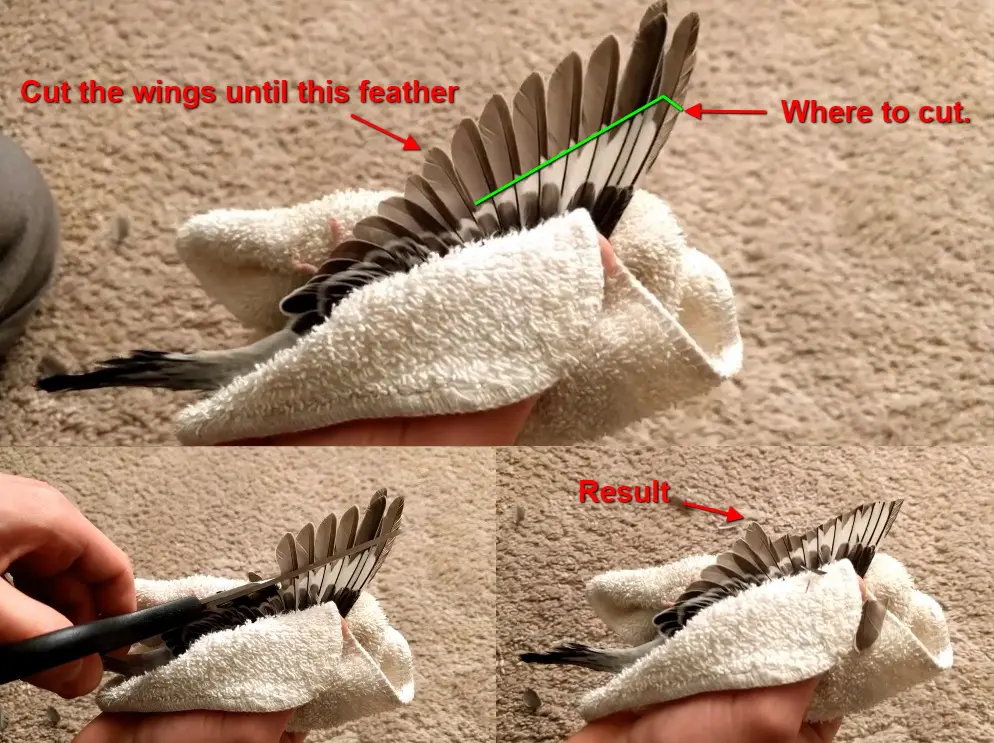
The Importance of One Feather at a Time
Always clip one feather at a time. This gives you more control and reduces the risk of making mistakes.
Ensuring Symmetry in Clipping
It’s essential to ensure that the wings are clipped symmetrically, meaning the same number of feathers are clipped on each wing.
Symmetry is vital for balance, even if the bird is only making short flights in an aviary.
Avoiding Blood Feathers
Blood feathers are growing feathers with a blood supply. They appear darker and have a thick shaft.
Avoid clipping these because it can cause pain and bleeding.
Post-Clipping Test Flight
After clipping, it’s essential to understand how effective the process was in achieving the desired result.
Assessing the Effectiveness of the Clipping
Let the bird take a short flight. Observe if it’s flying too high or if it has difficulty getting lift.
The idea is not to ground the bird completely but to limit long, high flights.
Deciding if More Feathers Need to Be Clipped
Based on your observations, decide if you need to clip more feathers.
Remember, less is more. It’s better to clip fewer feathers initially and then adjust as necessary.
In essence, when clipping, prioritize the bird’s safety and comfort, and always be informed about the effects of your actions.
Growth: Understanding Wing Regrowth
When we talk about birds, their wings are like our arms. Just as we care about our arm’s health, understanding how bird wings regrow after being clipped is crucial.
How Wings Heal and Grow After Clipping
When a bird’s flight feathers are clipped, it doesn’t hurt them like a haircut doesn’t hurt us. The feathers are made of keratin, the same stuff our nails and hair are made of.
Over time, clipped feathers grow in their place, just like how our hair grows back after a haircut.
Factors That Affect Regrowth
Several things can impact how fast and well a bird’s wings grow back:
- Diet: Just like we need good food to have strong hair and nails, birds need a nutritious diet to grow strong feathers. Foods rich in proteins, vitamins, and minerals are best.
- Age: Younger birds might regrow their feathers a bit faster than older ones. Think about how kids sometimes seem to grow overnight!
- Health: A sick bird might take longer to regrow its feathers. Keeping birds healthy is essential.
- Environment: Birds living in a good environment, with clean air and the right amount of light, tend to have better feather growth.
Addressing Common Questions About Regrowth
Q: Does clipping once mean the feathers will always grow back shorter or differently?
A: No, once clipped feathers fall out, the new ones grow back normal, just like how hair grows back normally after a haircut.
Q: How long does it take for feathers to regrow fully?
A: It can vary, but usually, it takes a few months for full regrowth.
Q: Is there any way to speed up the regrowth process?
A: Giving birds a healthy diet and ensuring they live in a good environment can help.
Flying Implications
When birds have their wings clipped, it can affect their flying. Think of it like wearing shoes that are too big or small; walking can become tricky.
Effects of Wing Clipping on a Budgie’s Ability to Fly
Wing clipping is like giving a bird a haircut for its feathers.
For budgies, these haircuts can make it hard for them to fly high or for long distances.
They might only be able to flutter or glide short distances. This is because their flight feathers, which help them soar and move quickly, have been shortened.
For a budgie with clipped wings, getting around can be a bit more challenging.
Imagine trying to jump and reach something but always coming up short.
That’s how these budgies might feel. They might need more time to reach high places or might prefer to stay closer to the ground.
Emotional and Psychological Impacts on the Bird
Just like people might feel sad or upset if they can’t do something they love, birds can feel this way too.
Budgies with clipped wings might be frustrated or confused. They’re used to flying, so having that ability limited can be emotionally challenging.
Feather Health and Damage
Feathers are like a bird’s outfit. They need to keep it clean and in good shape to look and feel their best.
Understanding the Health of a Budgie’s Feathers
A healthy budgie feather is smooth, bright, and colorful. When feathers are healthy, they can catch the air better, helping the bird fly.
Dirty or damaged feathers can’t do their job as well.
Physical Implications and Potential Damages Due to Clipping
When a budgie’s wings are clipped too much or in the wrong way, it can hurt them.
The feathers might not grow back right, or the bird might get hurt trying to fly.
Clipped wings can also cause the bird to fall or crash, leading to injuries.
That’s why it’s super important to be careful and know what you’re doing if you decide to clip a bird’s wings.
Clipping Frequency and Timing
Every pet owner wants the best for their animals. One thing they might wonder about is how often they should clip a bird’s wings.
Determining When It’s Time to Re-clip
Just like our hair keeps growing, a bird’s feathers grow back too.
But not super-fast! If someone clips a bird’s wings, they’ll need to keep an eye on them.
When the feathers start looking long again, it’s probably time for another trim.
Factors Influencing the Frequency of Clipping
There’s no one-size-fits-all answer here. Different birds might need their wings clipped at different times.
It depends on things like:
- The bird’s age: Young birds might grow their feathers faster.
- The species: Some birds have feathers that grow quicker than others.
- How the last clip was done: If it was a big trim, it might be longer before they need another.
Recognizing Signs of Wing Regrowth
The best way to know if it’s time for another trim is by watching the bird.
If they start flapping more or try flying higher, their feathers might be growing back.
The feathers will also look longer and fuller.
The Controversy: Addressing Concerns and Morality
Clipping a bird’s wings is a big decision. Some people think it’s okay, but others aren’t so sure.
Ethical Considerations of Wing Clipping
When making choices about pets, it’s good to think about what’s best for the animal.
Birds were born to fly. Taking away this natural ability can be a tough call.
It might be done to keep the bird safe, but is it right to limit their freedom?
Perspectives on the Cruelty of Clipping
Some people say clipping is cruel. They believe birds should fly free and live as they would in nature.
Others think it’s okay if done right, especially if it keeps the bird safe from dangers like windows or predators.
Health and Well-being Implications
Wing clipping can affect how a bird lives. If they can’t reach high places, they might miss out on things they need.
But it’s also about feelings. Birds might get sad or frustrated if they can’t fly.
That’s why it’s important to think about their happiness and health when making decisions.
Faqs
How Can Clipping Techniques Differ for Juvenile Budgies Compared to Adults?
Young budgies, just like baby humans, are a bit different from grown-ups.
Juvenile budgies have softer and more delicate feathers. This means when we clip their wings, we need to be extra gentle.
They might have fewer feathers too, so it’s good to check and make sure we’re not clipping too many.
Do Different Budgie Breeds Require Varied Clipping Techniques?
Budgies come in all colors and sizes. While our study focused on chickens, it’s known that different breeds or types of any bird might have different needs.
Some budgie breeds might have stronger wings or longer feathers. It’s always best to learn about your specific breed before clipping.
How Can Owners Address Budgie Distress Post-clipping?
Sometimes, budgies can get a little upset after getting their wings clipped.
It’s like when we get a haircut we didn’t want! If this happens, give your budgie some comfort and extra attention.
Make sure they have their favorite toys and treats. With time and care, they’ll feel better.
Why Are Blood Feathers Critical to Avoid During Clipping?
Blood feathers are like baby feathers. They’re still growing and have a blood supply.
Clipping them can hurt the budgie and cause bleeding. It’s super important to avoid these feathers when trimming.
If someone is not sure which ones they are, it’s best to ask an expert.
Can Clipping Affect the Social Behavior of Budgies With Other Birds?
When birds are together, they chat, play, and sometimes even argue, just like us with our friends.
Clipping a budgie’s wings might change how they hang out with their bird buddies.
The study on chickens showed that when their wings were clipped, they spent less time at higher places.
This could mean a budgie might not reach its favorite perch or might feel left out if other birds are up high.
This could change how they feel and act with other birds.
How Can Budgie Owners Determine the Optimal Clipping Frequency for Their Specific Bird?
Every budgie is unique, just like every person is unique. Some might need their wings clipped more often, while others less so.
It’s not a one-size-fits-all answer. However, noticing how quickly your budgie’s feathers grow back and how it behaves can give a hint.
If a budgie struggles to fly or seems uncomfortable, it might be time for a trim.
But always ask a bird expert or vet for advice.
Is There a Particular Season or Time of Year Best Suited for Clipping?
Nature has its own calendar. Birds usually shed and grow new feathers at certain times of the year.
It’s best to clip a budgie’s wings after they’ve grown their new feathers.
This means they’ll be fresh and strong.
How Does the Clipping of Budgie Wings Compare to Other Common Pet Birds?
Birds are diverse. A chicken is not the same as a budgie, and a budgie isn’t the same as a parrot.
Budgies are smaller and lighter, so their flight might be affected differently than bigger birds.
Always learn about what’s best for your type of bird.
